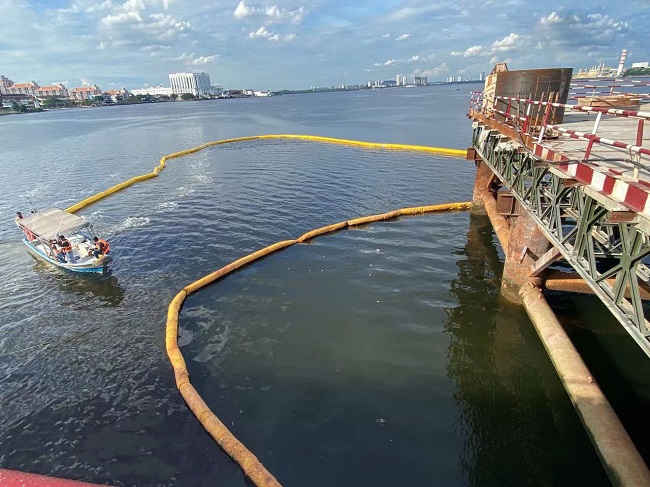Project construction facilitates ecological preservation in Malaysia


A water bird appears in the construction site
"Look, otters are here!" With a shout, Nor Ain Fatihah Mohd Azizi, the project environmental manager, discovered a group of otters in the sea by the construction area. This scene took place at the construction site of the RTS project's elevated section.
As a mammal that thrives in marine and freshwater habitats, otters have been listed in the Appendix of the Convention on International Trade in Endangered Species of Wild Fauna and Flora (CITES). They have high requirements for water quality.
At the RTS project site, construction workers often spot otters cruising in the nearby area.
"Project construction emphasizes both ecological protection and coexistence with nature, and this harmonious scene of humans and nature is inseparable from the hard work of the entire team," said Zhao Zhifeng, the project leader.

The RTS project
The RTS project, undertaken by the China Communications Construction Company (Malaysia), is a dual-track standard gauge metro line with a total length of approximately 4 kilometers. Upon completion, the system will have a maximum carrying capacity of 10,000 passengers per hour in one direction between Malaysia and Singapore.
The project team has always attached great importance to the impact of construction on the marine environment and collaborates with various parties to protect the marine ecosystem.
In addition to introducing the negative impact on the marine environment to staff during the "zero plastic waste campaign", the project team has also purchased nearly ten thousand meters of pollution-blocking screens to prevent the widespread dispersion of turbid water and suspended matter.

The construction team sets up pollution-blocking screens.
Moreover, following the suggestion of Nor Ain Fatihah Mohd Azizi, construction sites are equipped with environmentally-friendly toilets that have special bio-degradable functions, effectively improving the level of purification of domestic wastewater; a plan for the regular collection and disposal of waste has been implemented; 24-hour water quality monitoring buoy sensors have been applied to collect real-time water quality data including pH value, dissolved oxygen and turbidity; a third-party environmental organization has also been invited to conduct regular monthly water quality monitoring, marine organism monitoring and sediment monitoring, in a bid to provide more comprehensive and accurate environmental assessment results and ensure minimal environmental impact from construction activities.
As of now, the marine environmental protection work of the project team has met local standards and been highly recognized.
Upon the completion of this project, it will significantly improve the traffic capacity of the coastal highways in Malaysia and Singapore, further enhancing communication and connectivity between the two countries and promoting their economic development.











.png)
.png)
.png)





